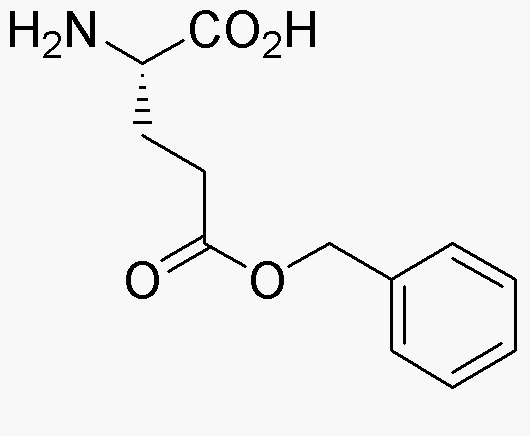L-Glutamic acid g-benzyl ester is widely utilized in research focused on:
- Pharmaceutical Development: This compound serves as a key intermediate in synthesizing various pharmaceuticals, particularly those targeting neurological conditions, due to its role in neurotransmitter function.
- Biochemical Research: It is employed in studies related to protein synthesis and metabolic pathways, helping researchers understand cellular processes and develop new therapeutic strategies.
- Food Industry: Used as a flavor enhancer, it can improve the taste profile of food products, making it valuable for food scientists looking to create more palatable options.
- Agricultural Applications: The compound is explored for its potential in developing bio-stimulants that enhance plant growth and resilience, benefiting agronomists and farmers.
- Cosmetic Formulations: Its properties are leveraged in skincare products for their moisturizing and skin-repairing benefits, appealing to cosmetic chemists aiming for effective formulations.
General Information
Properties
Safety and Regulations
Applications
L-Glutamic acid g-benzyl ester is widely utilized in research focused on:
- Pharmaceutical Development: This compound serves as a key intermediate in synthesizing various pharmaceuticals, particularly those targeting neurological conditions, due to its role in neurotransmitter function.
- Biochemical Research: It is employed in studies related to protein synthesis and metabolic pathways, helping researchers understand cellular processes and develop new therapeutic strategies.
- Food Industry: Used as a flavor enhancer, it can improve the taste profile of food products, making it valuable for food scientists looking to create more palatable options.
- Agricultural Applications: The compound is explored for its potential in developing bio-stimulants that enhance plant growth and resilience, benefiting agronomists and farmers.
- Cosmetic Formulations: Its properties are leveraged in skincare products for their moisturizing and skin-repairing benefits, appealing to cosmetic chemists aiming for effective formulations.
Documents
Safety Data Sheets (SDS)
The SDS provides comprehensive safety information on handling, storage, and disposal of the product.
Product Specification (PS)
The PS provides a comprehensive breakdown of the product’s properties, including chemical composition, physical state, purity, and storage requirements. It also details acceptable quality ranges and the product's intended applications.
Certificates of Analysis (COA)
Search for Certificates of Analysis (COA) by entering the products Lot Number. Lot and Batch Numbers can be found on a product’s label following the words ‘Lot’ or ‘Batch’.
*Catalog Number
*Lot Number
Certificates Of Origin (COO)
This COO confirms the country where the product was manufactured, and also details the materials and components used in it and whether it is derived from natural, synthetic, or other specific sources. This certificate may be required for customs, trade, and regulatory compliance.
*Catalog Number
*Lot Number
Safety Data Sheets (SDS)
The SDS provides comprehensive safety information on handling, storage, and disposal of the product.
DownloadProduct Specification (PS)
The PS provides a comprehensive breakdown of the product’s properties, including chemical composition, physical state, purity, and storage requirements. It also details acceptable quality ranges and the product's intended applications.
DownloadCertificates of Analysis (COA)
Search for Certificates of Analysis (COA) by entering the products Lot Number. Lot and Batch Numbers can be found on a product’s label following the words ‘Lot’ or ‘Batch’.
*Catalog Number
*Lot Number
Certificates Of Origin (COO)
This COO confirms the country where the product was manufactured, and also details the materials and components used in it and whether it is derived from natural, synthetic, or other specific sources. This certificate may be required for customs, trade, and regulatory compliance.


